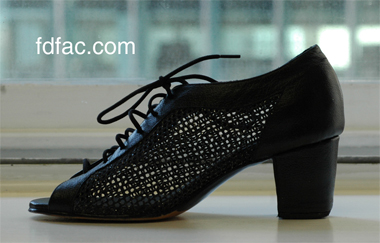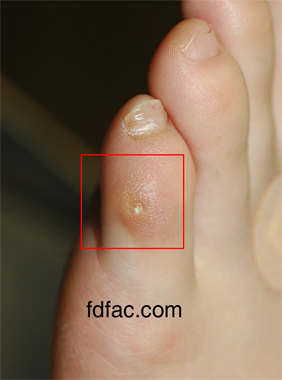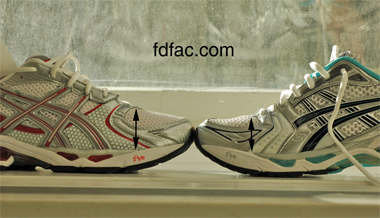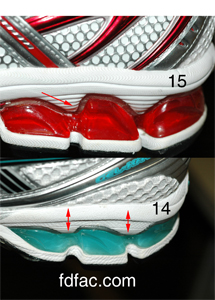Reader Jason asks “I was wondering if you had more information about shin pain during running. what could be the cause, what could be the remedy, etc.? “
Shin splints also known as Anterior Tibial Tendonitis can occur for a variety of reasons.

Here are the most common causes I see in my office.
- Shoes – A soft lateral midsole or simply excessive wear can cause shin splints. If you haven’t had shin splints before and then you do, you probably need new shoes. If the wear looks like this (especially the left) when you set your shoes on a flat surface, then excessive wear is probably the cause.

- Over-training or changing running surface or terrain. A change to concrete from trails or an increase in downhill running can also cause shin splints.

- Alignment – A condition called tibial varum (bowed legs) can predispose a person to shin splints as this causes the pull of the muscle to be angled versus straight, resulting in the muscle pulling away from the lower leg bone (tibia). If a person’s tibial varum is significant, it can also cause Achilles tendonitis or even a stress fracture of the tibia which becomes a serious problems activity-wise.
Whenever I have a patient with shin splints, I do a thorough treadmill evaluation with shoes on and off and make specific recommendations if the problem is the shoe. I will also do a complete medical examination including xrays, ultrasound and MRI if indicated.
If the problem is biomechanical (alignment)I will make a custom orthotic, especially if the pain has been long standing. If the problem is acute I will try taping, icing and over the counter anti-inflammatory medications (Motrin, Aleve). If this doesn’t work and the pain is really severe, I will probably do a cortisone injection, which typically works very well.
If the problem is over-training I have the person back it up and if it’s a change in terrain, I’ll recommend softer trails and/or fewer hills until the pain lets up. Physical therapy can also help.










